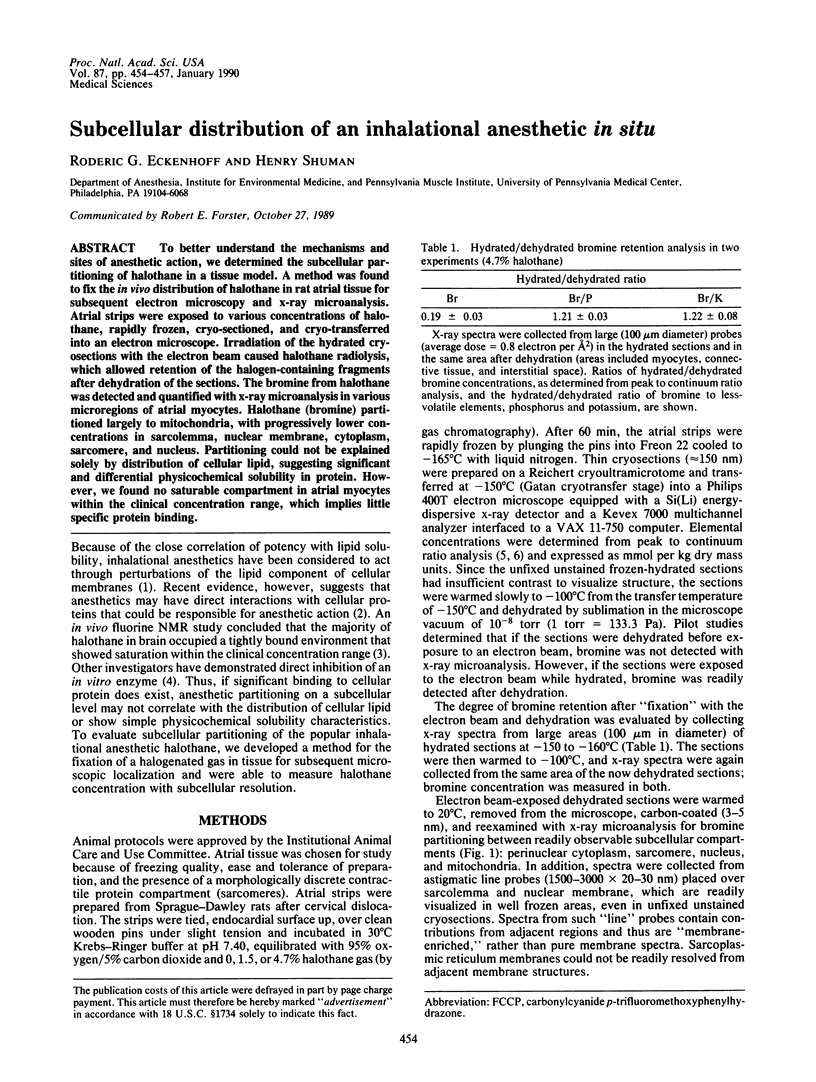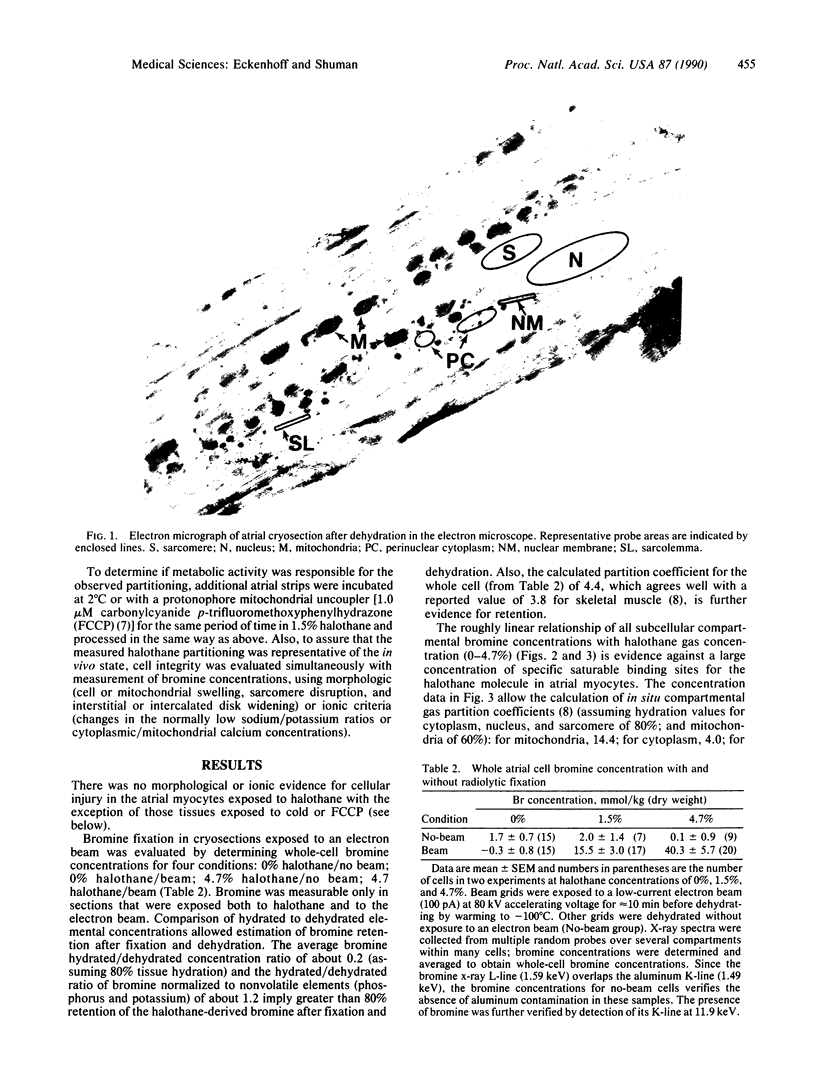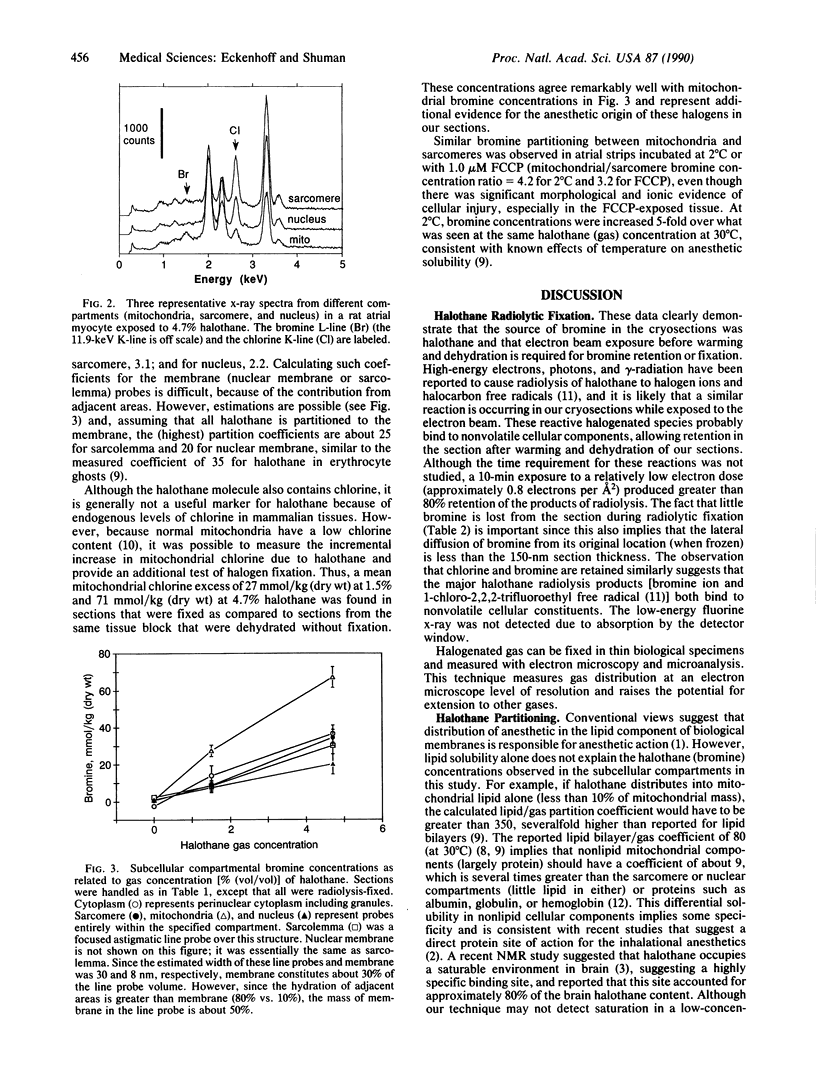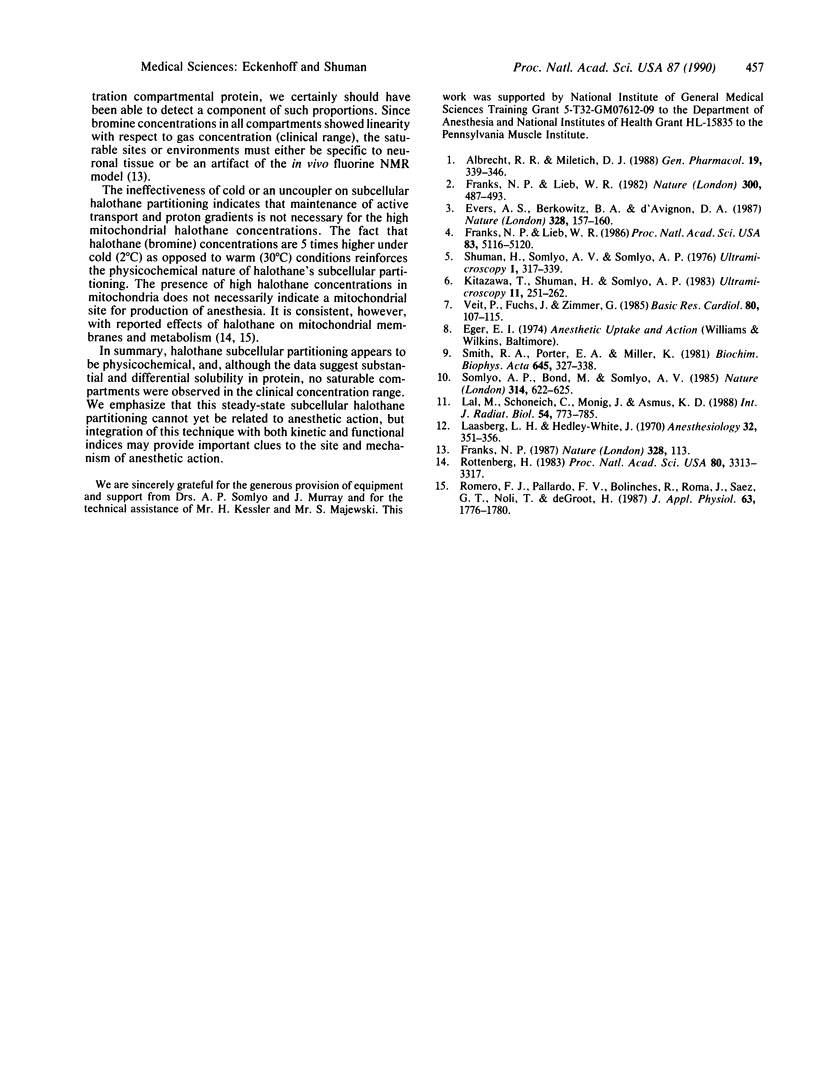Abstract
To better understand the mechanisms and sites of anesthetic action, we determined the subcellular partitioning of halothane in a tissue model. A method was found to fix the in vivo distribution of halothane in rat atrial tissue for subsequent electron microscopy and x-ray microanalysis. Atrial strips were exposed to various concentrations of halothane, rapidly frozen, cryo-sectioned, and cryo-transferred into an electron microscope. Irradiation of the hydrated cryosections with the electron beam caused halothane radiolysis, which allowed retention of the halogen-containing fragments after dehydration of the sections. The bromine from halothane was detected and quantified with x-ray microanalysis in various microregions of atrial myocytes. Halothane (bromine) partitioned largely to mitochondria, with progressively lower concentrations in sarcolemma, nuclear membrane, cytoplasm, sarcomere, and nucleus. Partitioning could not be explained solely by distribution of cellular lipid, suggesting significant and differential physicochemical solubility in protein. However, we found no saturable compartment in atrial myocytes within the clinical concentration range, which implies little specific protein binding.
Full text
PDF



Images in this article
Selected References
These references are in PubMed. This may not be the complete list of references from this article.
- Albrecht R. F., Miletich D. J. Speculations on the molecular nature of anesthesia. Gen Pharmacol. 1988;19(3):339–346. doi: 10.1016/0306-3623(88)90026-2. [DOI] [PubMed] [Google Scholar]
- Evers A. S., Berkowitz B. A., d'Avignon D. A. Correlation between the anaesthetic effect of halothane and saturable binding in brain. Nature. 1987 Jul 9;328(6126):157–160. doi: 10.1038/328157a0. [DOI] [PubMed] [Google Scholar]
- Franks N. P., Lieb W. R. Molecular mechanisms of general anaesthesia. Nature. 1982 Dec 9;300(5892):487–493. doi: 10.1038/300487a0. [DOI] [PubMed] [Google Scholar]
- Franks N. P., Lieb W. R. Neuron membranes: anaesthetics on the mind. Nature. 1987 Jul 9;328(6126):113–114. doi: 10.1038/328113a0. [DOI] [PubMed] [Google Scholar]
- Franks N. P., Lieb W. R. Partitioning of long-chain alcohols into lipid bilayers: implications for mechanisms of general anesthesia. Proc Natl Acad Sci U S A. 1986 Jul;83(14):5116–5120. doi: 10.1073/pnas.83.14.5116. [DOI] [PMC free article] [PubMed] [Google Scholar]
- Laasberg L. H., Hedley-Whyte J. Halothane solubility in blood and solutions of plasma proteins: effects of temperature, protein composition and hemoglobin concentration. Anesthesiology. 1970 Apr;32(4):351–356. doi: 10.1097/00000542-197004000-00010. [DOI] [PubMed] [Google Scholar]
- Lal M., Schöneich C., Mönig J., Asmus K. D. Rate constants for the reactions of halogenated organic radicals. Int J Radiat Biol. 1988 Nov;54(5):773–785. doi: 10.1080/09553008814552211. [DOI] [PubMed] [Google Scholar]
- Romero F. J., Pallardó F. V., Bolinches R., Romá J., Sáez G. T., Noll T., de Groot H. Dependence of hepatic gluconeogenesis on PO2: inhibitory effects of halothane. J Appl Physiol (1985) 1987 Nov;63(5):1776–1780. doi: 10.1152/jappl.1987.63.5.1776. [DOI] [PubMed] [Google Scholar]
- Rottenberg H. Uncoupling of oxidative phosphorylation in rat liver mitochondria by general anesthetics. Proc Natl Acad Sci U S A. 1983 Jun;80(11):3313–3317. doi: 10.1073/pnas.80.11.3313. [DOI] [PMC free article] [PubMed] [Google Scholar]
- Shuman H., Somlyo A. V., Somlyo A. P. Quantitative electron probe microanalysis of biological thin sections: methods and validity. Ultramicroscopy. 1976 Sep-Oct;1(4):317–339. doi: 10.1016/0304-3991(76)90049-8. [DOI] [PubMed] [Google Scholar]
- Smith R. A., Porter E. G., Miller K. W. The solubility of anesthetic gases in lipid bilayers. Biochim Biophys Acta. 1981 Jul 20;645(2):327–338. doi: 10.1016/0005-2736(81)90204-2. [DOI] [PubMed] [Google Scholar]
- Somlyo A. P., Bond M., Somlyo A. V. Calcium content of mitochondria and endoplasmic reticulum in liver frozen rapidly in vivo. Nature. 1985 Apr 18;314(6012):622–625. doi: 10.1038/314622a0. [DOI] [PubMed] [Google Scholar]
- Veit P., Fuchs J., Zimmer G. Uncoupler- and hypoxia-induced damage in the working rat heart and its treatment. I. Observations with uncouplers of oxidative phosphorylation. Basic Res Cardiol. 1985 Mar-Apr;80(2):107–115. doi: 10.1007/BF01910457. [DOI] [PubMed] [Google Scholar]



